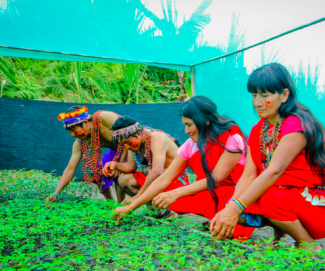The Amazon is home to 1.6 million indigenous people, some of whom continue to live in voluntary isolation, and all of whom depend on the forests and waters of the Amazon for their material and cultural survival. Protected areas and indigenous territories are known to be the best conserved lands in the Amazon, and USAID considers the region’s indigenous peoples to be the foundation for achieving its conservation goals. Their active and meaningful participation in development planning and decisions affecting the Amazon is the basis for the long-term conservation of the world's largest rainforest. Safeguarding the rights and resources of indigenous peoples will help conserve irreplaceable biodiversity and ecosystem services, and promote cultural survival and self-determined development.

